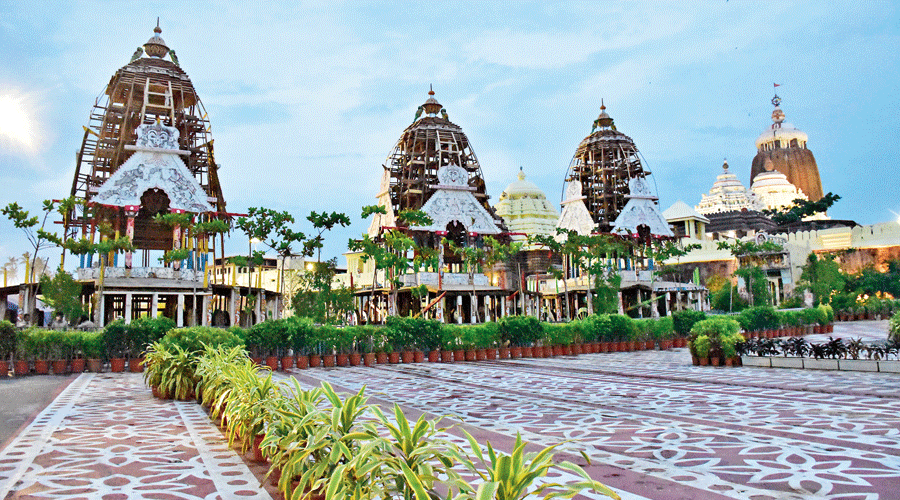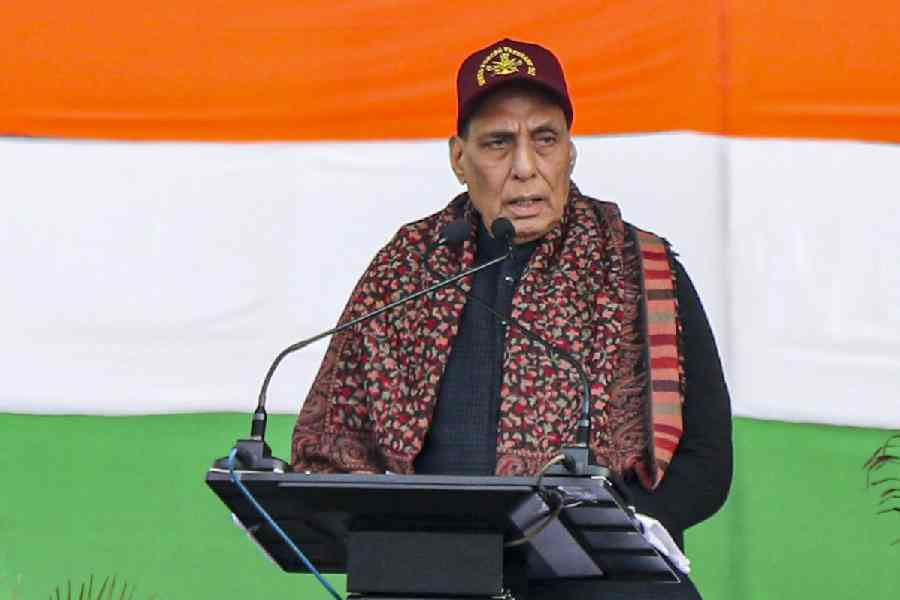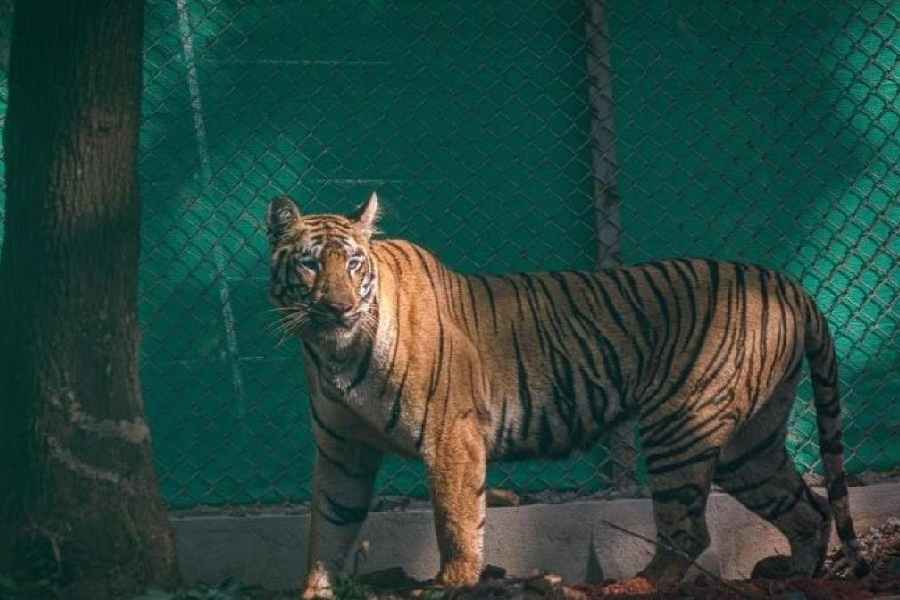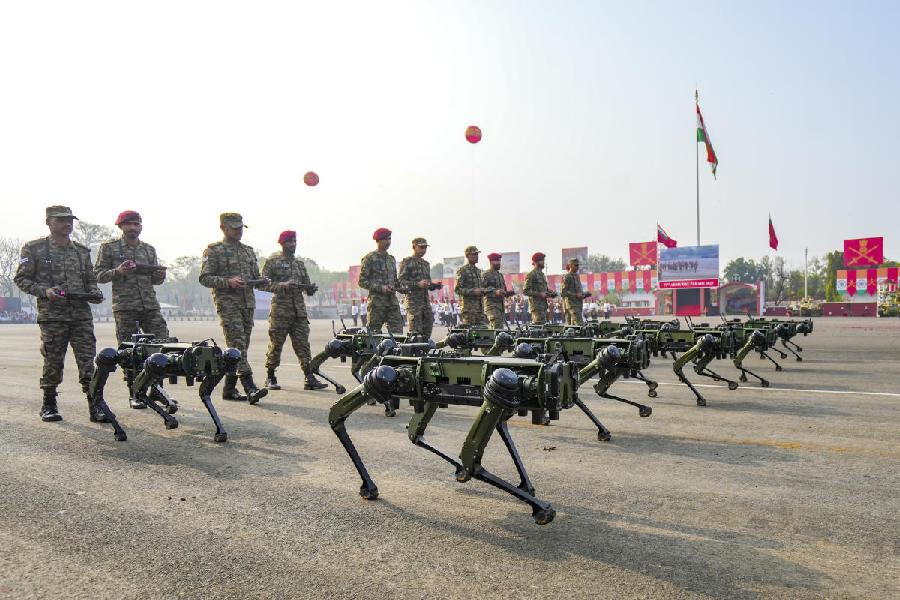The Jagannath Temple administration in Puri has decided to break with tradition and preserve the three wooden chariots used in the recent Rath Yatra, dismaying the carpenters, a segment of the servitors and even some members of the shrine management.
Normally, the chariots are stripped down after the Rath Yatra to be used as firewood in the temple kitchen. But since the Supreme Court banned public participation at this year’s event to keep the coronavirus at bay, the temple authorities want to preserve the chariots for later darshan by devotees.
They have decided the chariots will be dismantled and kept near the Jagannath Ballava Mutta, about 500 metres from the Jagannath Temple, and later reassembled for viewing.
But carpenters have questioned the plan’s feasibility, saying that even if the wood does not break during dismantling, it would not last long enough amid the humidity, rain and sea spray. Others are unhappy at the breach of tradition. But the temple management is unfazed.
“The wood can be treated to keep it safe from termites and worms if necessary,” the temple’s chief administrator, Krishan Kumar, said. “If any part of the chariots breaks during dismantling, it will be replaced.”
He added: “A plan was approved at a joint meeting of the Chhatisha Niyog (confederation of 36 servitors) and the temple management committee to keep the three chariots at the Pramod Udyana (recreation garden on the Mutta premises).”
A technical committee is “looking into the feasibility of the plan and the challenges it might present”, Kumar said.
Temple sources said display boards would be put up near the chariots explaining the process of their construction and detailing the number of wheels each has and the kind of wood used in making them. The tourism department will have an interpretation centre at the spot to educate people on the Jagannath culture.
Nandighosh, the chariot of Lord Jagannath, is 45.6 feet high and has 16 wheels; Taladwaja of Lord Balabhadra is 45 feet high and has 14 wheels; and Darpadalan of Goddess Subhadra is 44.6 feet high and has 12 wheels. Nearly 10,800 cubic feet of wood is used to build the three chariots.
Carpenters are sceptical about the practicability of dismantling, preserving and reassembling the gigantic chariots, made mostly of ashan wood.
“We have lodged a protest against the decision. The wood used in the chariots will not last. During the construction, we use nails ranging in length from four inches to four feet. During dismantling, the logs will break; only the wheels can be retrieved,” the chief carpenter for chariot-making, Bijay Mohapatra, told The Telegraph.
“Since time immemorial, new chariots have been built in Puri every year. That’s why we never use hard wood like sal or teak. In places facing a dearth of wood, they use this kind of timber (sal or teak) so that the chariots can be used for a long time. But not in Puri, where we make new ones every time.”
Another carpenter said: “Because of our proximity to the sea saline blasts, the high humidity levels and the heavy rain we witness frequently, the wood will get disfigured after some time. It will also lose its sheen.”
He added: “Very few chariot wheels could be sold after the temple administration decided a few years ago to sell them after Rath Yatra. The unsold wheels are gathering dust inside the Shree Gundicha temple.”
A temple management committee member, Rama Chandra Das Mohapatra, blamed “the IAS officers at the helm of the temple administration”.
“They take decisions according to their whims. But soon after they get transferred, the decisions are forgotten. Each of them wants to do something extraordinary,” he said.
A former temple administrator cited the example of 1992, when “two stones weighing about one tonne each fell from atop the temple” and the deities were shifted from the sanctum sanctorum and placed on a makeshift wooden platform for nearly eight months.
“After repairs, the deities were returned to the sanctorum. The then administration decided to preserve the makeshift platform for public viewing, but it got destroyed (by the forces of nature in a few years).”
Rama Krushna Das Mohapatra, former president of the Daitapati Niyog, an organisation of the temple servitors, opposed any “attempt to tamper with tradition”.
“We consider each chariot a living being. After the Rath Yatra, the wood is used as firewood. For the last few years, the temple administration has started selling wheels. Now an attempt is being made to preserve the old chariots,” he said.
“If they want to educate people, they should build miniature replicas of the chariots using new wood and put them inside glass cases. The existing chariots should not be preserved.”











